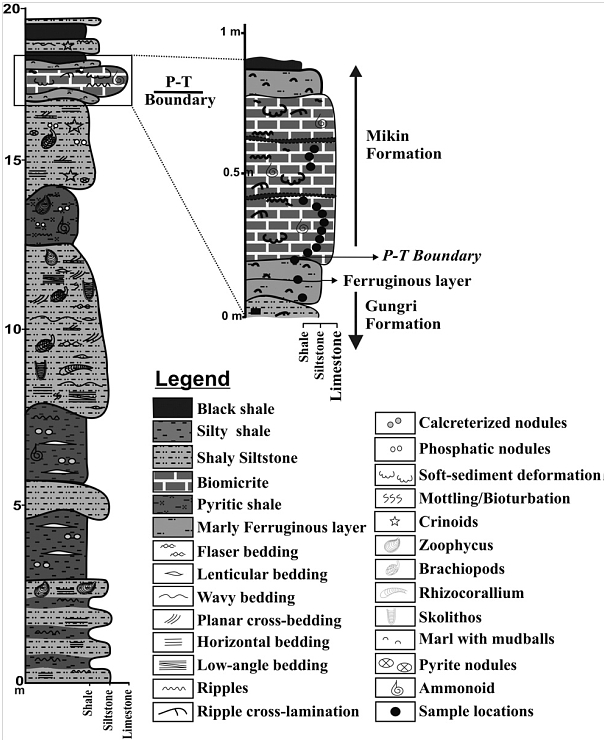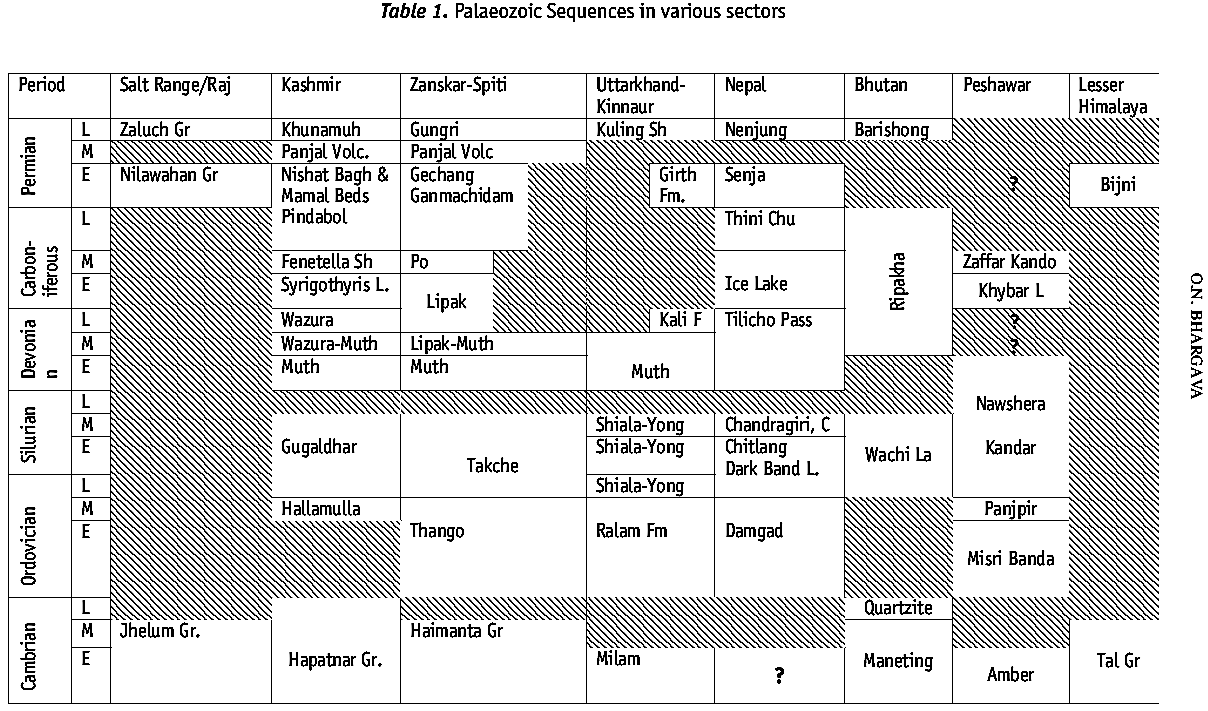Gungri Fm
Type Locality and Naming
Type section is in Gungri village in the Parahio Valley of Spiti. [Original Publication: Srikantia, S.V., 1981. The lithostratigraphy, sedimentation and structure of Proterozoic–Phanerozoic formations of Spiti basin in the higher Himalaya of Himachal Pradesh, India. In: Sinha, A.K. (Ed.), Contemporary Geoscientific Researches in India (a commemorative volume in honor of S.P. Nautiyal). Bishen Singh Mahendra Pal Singh, Dehra Dun, pp. 31–48.]
Synonyms: Productus Shale (Hayden, 1904)
[Figure: Zanskar-Spiti-Kumaun region location (provided by Om Bhargava)]
Lithology and Thickness
Siltstone. Grey siltstone, black carbonaceous shale and carbonates lenses. 10-67 m;
[Figure 1: Lithocolumn of the Gungri Formation (After Ghosh et al, 2016)]
Relationships and Distribution
Lower contact
Sharp contact with underlying Gechang Fm. A major unconformity spanning from late part of Artinskian (278 Ma) to early part of Wuchiapingian (258 Ma) has been proposed between the Gechang Fm and the Gungri Fm (Bhargava and Bassi, 1998).
Upper contact
Conformably overlain by the Mikin Fm of Lilang Supergroup in Zanskar-Spiti.
GeoJSON
Fossils
Cyclobus walkeri, Cyclolobus sp. Xenaspis carbonaria, Tintoriella rajah, Lamnimargus himalayensis and Waagenoconcha (Bhatt & Joshi, 1980; Bhargava, 2008).
Age
Depositional setting
Deposition in inner to-mid-shelf areas, presence of various deep-mud residing fossil traces including Zoophycos implies slow sedimentation rate under subtidal conditions, pyrite content and phosphatic nodules in shale layers point to limited circulation and anoxic-to-euxinic conditions in relatively deeper waters, interbedded siltstone beds represent high-energy storm events (Ghosh et al. 2016)
Additional Information


